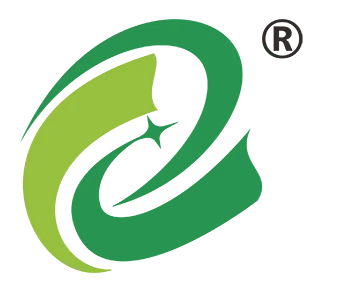What are the advantages of sandwich composites?
Sandwich composites materials are made up of two layers of thin, strong and rigid panels (i.e. sandwich composites) attached to the sides of a lightweight and relatively thick core material. Sandwich composites have many properties such as light weight, high specific stiffness, high specific strength, good thermal conductivity, and excellent designability.
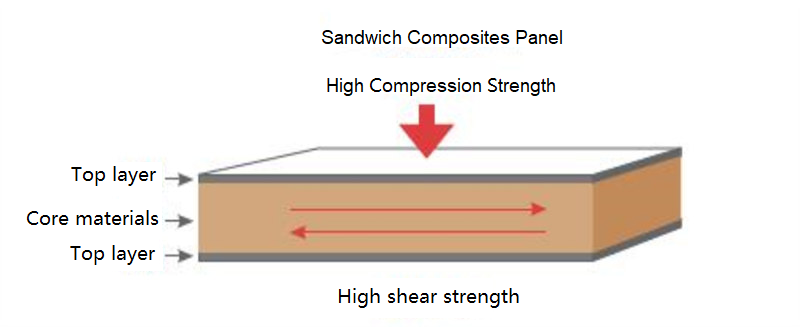
Sandwich composites offer significant weight reduction while maintaining mechanical properties. Sandwich composites are several times lighter than solid laminated structures with the same load capacity. The core also contributes to overall strength, reduces cost per unit volume, dampens noise and vibration, and increases heat, fatigue and fire resistance.
Why use core materials?
The mechanism of the core is to transmit shear forces from the skin layer to the inner layer, to stabilise both skins under static and dynamic loads, and to provide resistance to damage by absorbing impact energy.
The lower density of the core material means that sandwich composites are much lighter than non-sandwich composites that can carry the same loads; the core material also serves to enlarge the distance between the two panels, and the greater the panel spacing, the greater the moment of inertia of the entire sandwich cross-section, so that the overall strength of the sandwich is increased, and therefore the core material usually needs to have good shear strength.
What are the types and applications of FRP core materials?
The main core materials commonly used in FRP (FRP) sandwich structures are: strong core felts, lightweight foam cores (HPE foam cores, PMI foam cores, PET foam cores, PVC foam cores), honeycomb cores (PP/PC/PET honeycomb cores, aluminium honeycomb cores, aramid paper honeycomb cores) and balsa wood (balsa wood). Sandwich materials have a wide range of applications in wind energy, marine, aerospace, rail transport, construction and many other fields.

We are committed to providing our customers with perfect consulting procurement services and advanced composite material product solutions. Next, we would like to introduce the performance advantages and application areas of FRP core materials in detail, in order to help our customers how to choose a suitable core material.
1、HPE foam core material
HPE is a high-density polyethylene material that has good ductility and bond strength, and is able to absorb more energy without structural damage when bending or impact occurs. Ideal for high-strength, fatigue- and impact-resistant applications, HPE is compatible with polyester and epoxy resin systems, and does not require special treatment of the core surface to ensure good adhesion between the core and the panel. The high heat deflection temperature (+130°C) and operating temperature allow for higher curing temperatures and significantly lower moulding cure times.

Product Features:
*Excellent fatigue resistance
*Suitable for use in dynamically loaded structures
*Higher styrene resistance
* Higher temperature resistance
*Resin injection moulding is more desirable
*uses less resin than other foams
* is recyclable
Application Areas:
Wind power blades and main bearing components, ships, sports equipment and other fields.
2、PET foam core
PET is a closed cell thermoplastic renewable polymer foam with excellent mechanical and fatigue resistance, chemical stability, UV protection and low water absorption. It is chemically stable under high temperature process conditions and post-curing, and has good compatibility with most commonly used resins and manufacturing processes.
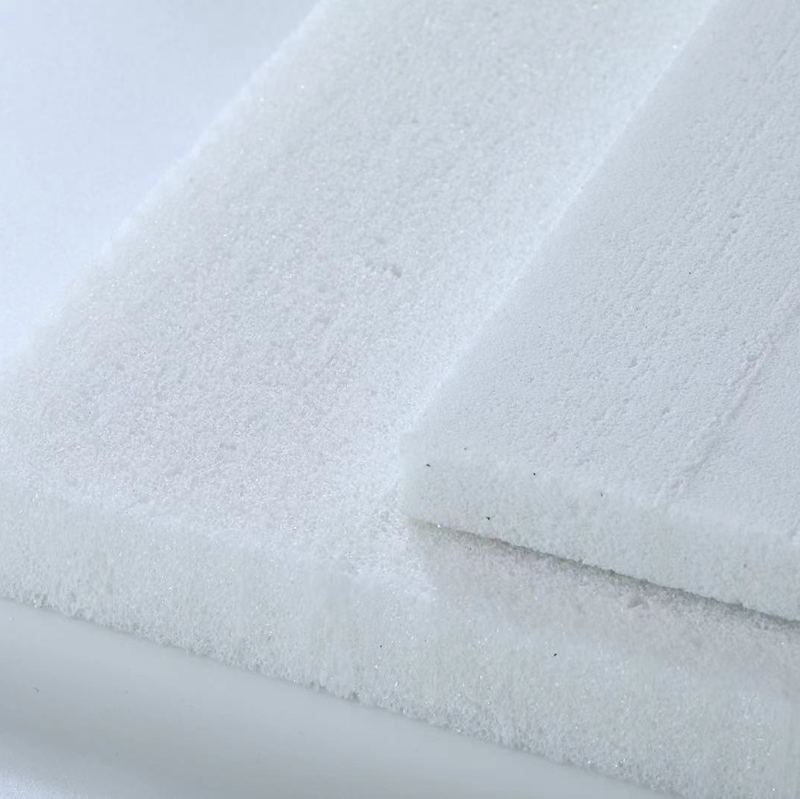
Product Performance:
* superior mechanical properties (tensile strength, compressive strength, impact resistance, etc.)
*Outstanding fatigue resistance
*favourable production repeatability
*Excellent resistance to high and low temperatures
*Small fluctuations in product properties for improved process stability
Application Areas:
Wind turbine blades, rail transport, ships, automotive, building materials and industry, etc.
Vehicle floors / sidewalls / body structures / interior structures / roof panels
Building roofs / cladding / domes / mobile homes / supporting formwork
3、PMI foam core material
PMI structural foam is made of methacrylic acid and methacrylonitrile copolymer foam obtained from the closed-cell, rigid rigid foam, that is, polymethacrylimide foam (referred to as PMI), PMI foam has good strength, high specific modulus, high heat resistance, compression, corrosion and other mechanical properties, easy to process, can be processed into a variety of complex shapes using thermoforming or machining method; has a good adhesion It has good adhesive properties, and can be used with epoxy resin, unsaturated polyester resin, bismaleimide resin, cyanoacrylate resin and other adhesives to obtain a good bonding interface; the heat distortion temperature is as high as 180 ° C – 200 ° C; and has good compression resistance.
Application areas:
Aerospace, rail transport, ships, new energy vehicles, wind power generation, sports equipment,
Honeycomb core material
1、Plastic honeycomb core material
Plastic honeycomb core material is a new type of structural material processed by PP/PC/PET and other materials according to the bionic principle of honeycomb. It has the characteristics of light weight and high strength, green environmental protection, waterproof and moisture-proof and corrosion-resistant, etc. It can be composited with different surface materials (such as glass fiber reinforced plastic, wood grain plate, aluminium plate, stainless steel plate, marble plate, rubber plate, etc.). It can replace traditional materials in a large scale and is widely used in vans, high-speed railways, aerospace, yachts, homes, mobile buildings and other fields.
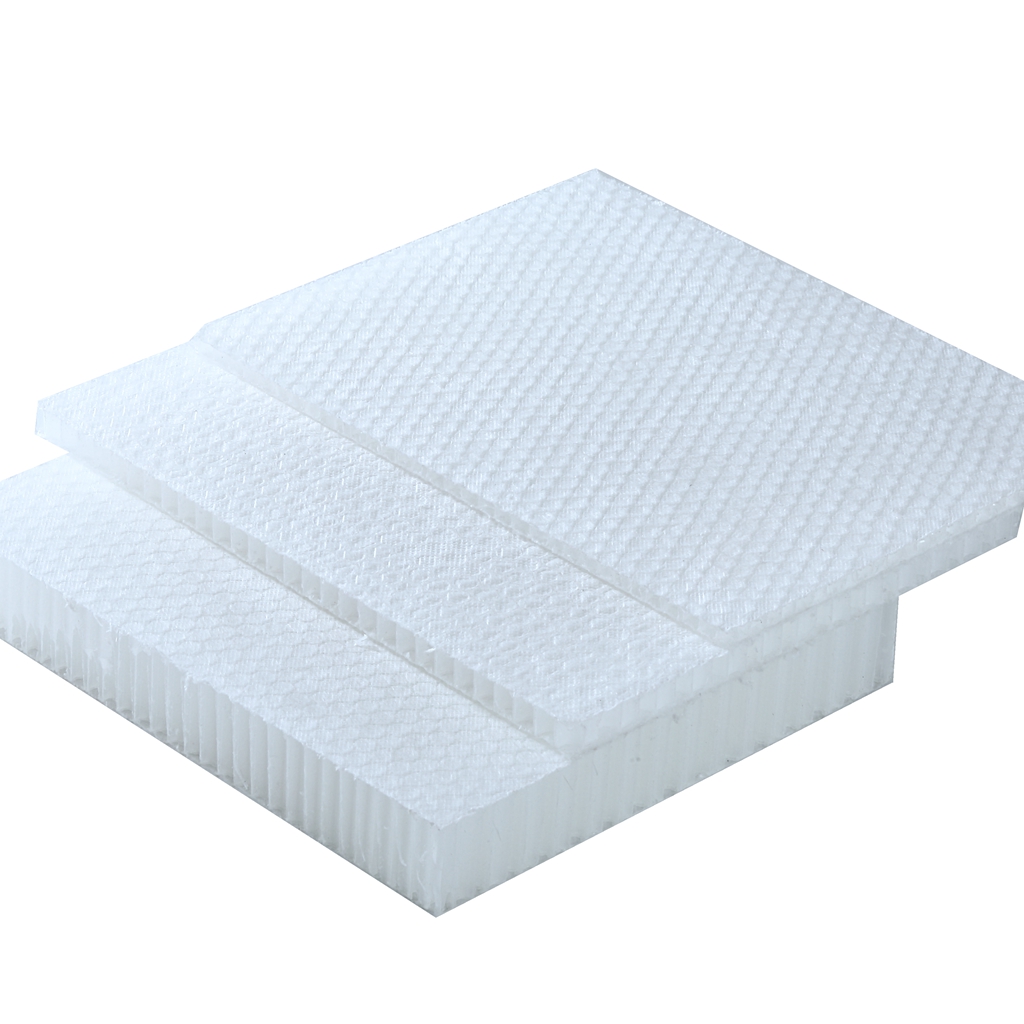
Product Features:
*Lightweight and high strength
*Green environmental protection
*Waterproof and moisture-proof
*Good corrosion resistance
*Soundproof
*Energy absorption
Application Areas:
Plastic honeycomb core is mainly used in rail transport, ships (especially yachts, speedboats), aerospace, marinas, pontoon bridges, van-type cargo compartments, chemical storage tank,construction, fiberglass, decoration of high-end houses, high-end mobile homes, sports protection products, body protection products and many other fields.
- Aramid paper honeycomb core material
Aramid paper is a composite material made of aramid fiber and pulp through a papermaking machine, and aramid paper honeycomb is made of aramid paper through processes such as gluing and laminating, pressing and curing, stretching and shaping, gluing, curing, and slicing.
Features:
It has many excellent properties such as light weight, high specific strength and specific stiffness, outstanding corrosion resistance and flame retardancy, excellent environmental resistance and insulation, unique resilience and shock absorption, good electromagnetic wave transmittance and high temperature stability.
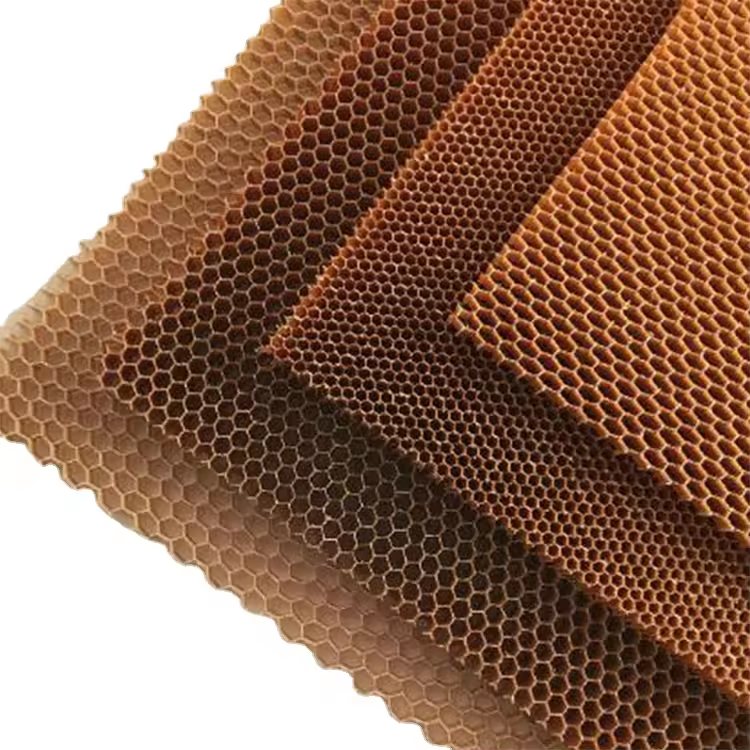
Application areas:
Aramid paper honeycomb as sandwich material is widely used in aerospace, rail transportation, ships and yachts, sports equipment and other industrial fields.
- Aluminum honeycomb core material
The aluminum honeycomb core is made of multiple layers of aluminum foil bonded and laminated. It has clear pore walls and no burrs, and is suitable for bonding high-quality cores to surface materials and other uses. The aluminum honeycomb panel core is a hexagonal aluminum honeycomb structure, which can disperse the pressure from the panel direction by restraining each other, making the force uniform and ensuring that the panel can still maintain a high degree of flatness when it is large in area.
Features:
Light weight, high strength, fire resistance, corrosion resistance, easy to cut, flat.
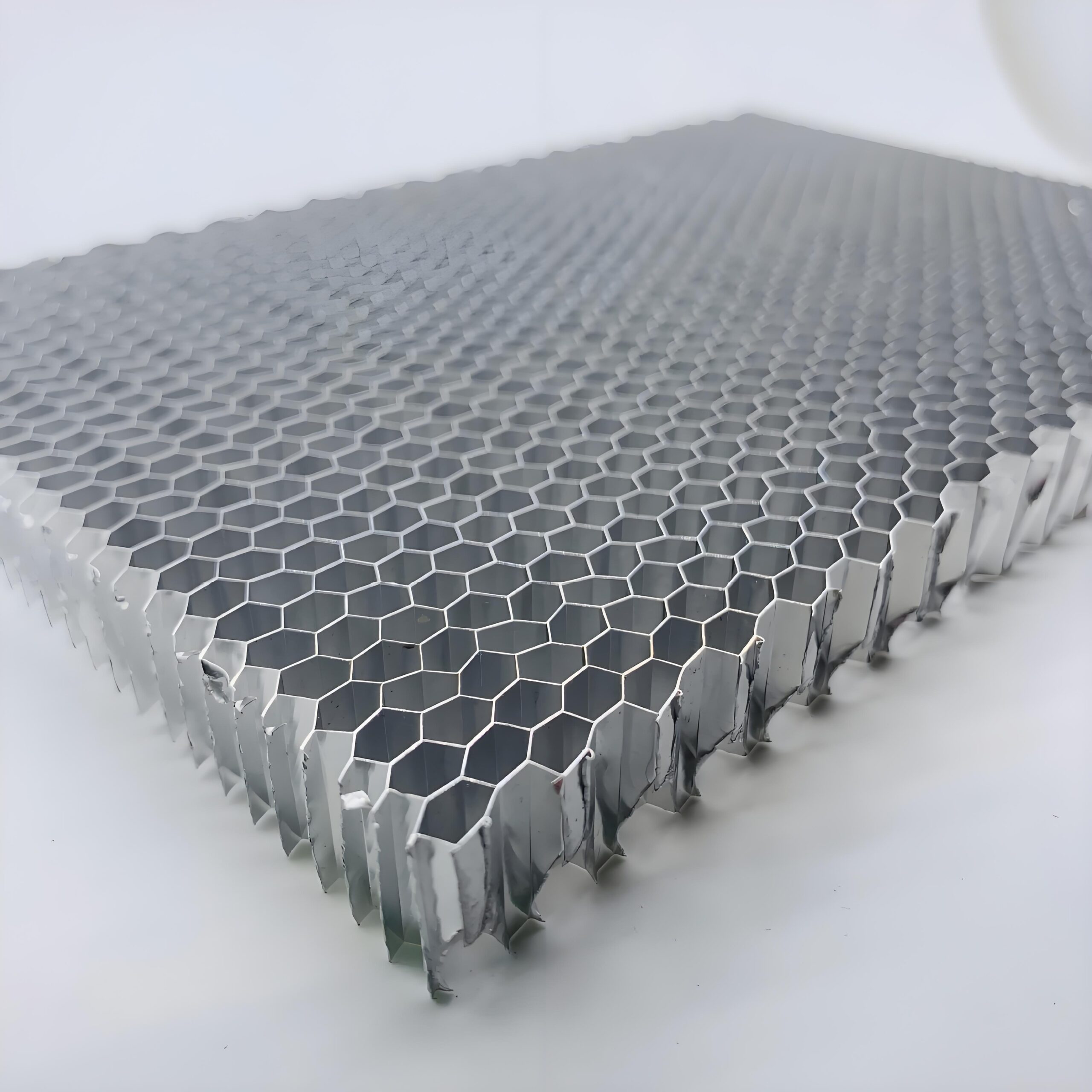
Application areas:
Photographic equipment, electronic communications, electronic shielding, yachts, wind power, aviation manufacturing, automobiles/trains/railway vehicles and commercial transport vehicles, mobile buildings, etc.
- Balsa
Balsa wood is the lightest wood in the world, so it is also called light wood. It has a stable volume and shape, is not easy to deform, has moderate strength and flexibility, and perfectly matches the characteristics required by wind turbine blades. It is an important high-quality material in sandwich structure composite materials such as wind turbine blades.
Features:
Balsa wood is the lightest, softest and easiest to cut wood in the world. It has good physical properties and is both heat-insulating and sound-insulating, with excellent insulation properties.
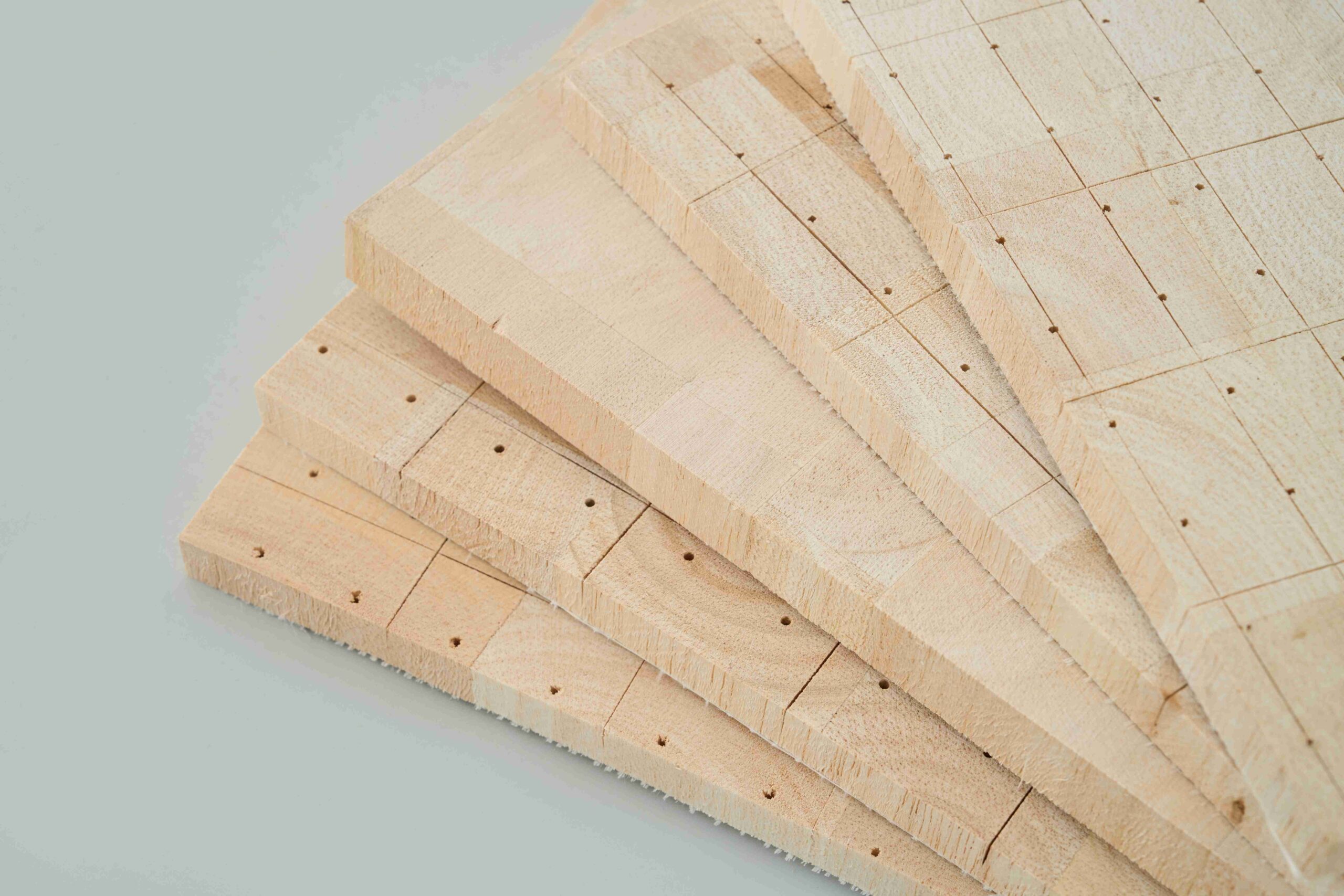
Application areas:
Balsa wood is suitable for wind turbine blades, boats, model airplanes, skis, surfboards, sporting goods, sound insulation boards, thermal insulation materials, aviation containers, yacht decorative panels, high-speed rail floors, etc.
